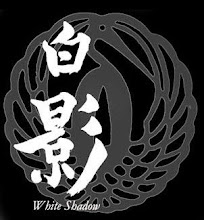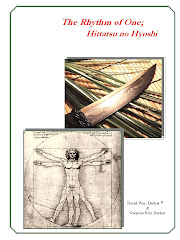This is a long one but I hope you enjoy it.
A lot of people have been asking how the Carbine Operator training went at Blackwater. For those of you who are not familiar with the Blackwater Facility in Moyoc, NC, it is huge. Since the big blowup in Iraq they changed the name to US Training Center, or Xe, so you see all of the names used here and there. The company owns over 7,000 acres. Here is a link to their website. It is worth the time to look and see what they offer.
http://www.ustraining.com/new/index.aspThere are over 35 shooting ranges from 100 yards to one 1200 yards. They have places for water rescue, shipboard insertions, small villages, a large driving course, and even their own airport. It is an amazing place. When you arrive at the gate to check in you are greeted by friendly armed guards. We stayed in the Blackbear lodge which was spartan but had nice hot showers and computer access with laptops available upstairs in a lounge area. The lodge had modern laundry facilities too. Everything was well kept and pleasant. We did not know what to expect and were pleased with our lodging. Close by was the large modern cafeteria and "Pro-Shop." Our breakfast and noon meals were included in the course fee. Just past the pro-shop was the armorer’s well stocked building. You can rent firearms but of course we took our own. We took (3) M-4 carbines (one was a spare), Gwynne took two Glocks and I took two 1911’s. In the trunk of our rental car was 4,000 rounds of .223 ammo and over 500 rounds of mixed pistol ammo. Almost all of this ammo was consumed in the five days we were there. As a side note, my old Bushmaster M-4 and fairly new Kimber Stainless II functioned flawlessly throughout the entire week. We were shooting Brown Bear ammo in the M-4s and I used Sellier & Bellot ammo in my 45. Gwynne had magazine issues with her Bushmaster M-4 where they did not want to lock in. Of course her Glock ran just fine.

Our instructors were absolutely top notch! I can not praise these two guys enough. One, Jason Falla, was from the ADF Australian Defense Force, the other, Chad Moorman, was an x-Seal Team member. They could shoot like nothing I have seen before! Monday morning was spent in the classroom with lectures on safety (obviously), the evolution of the Colt AR-15 into today’s modern and more reliable M-4 versions, ballistics of the .223 round, shooting techniques, tactics, etc. Monday afternoon was spent zeroing in our rifles at 50 yards (mine was previously zeroed at 25 yards) which gives a second zero at 200 yards. We did this from the prone position on granite chunks the size of ping pong balls. Yeh it was miserable trying to get a good solid shooting platform digging your elbows in and rolling around on the lumps of gravel and expended shell casings. Monday afternoon ended in a cold drizzle as we were finishing up our practice.
Believe me the days all blended together as we learned the proper carry positions and how to mount the gun from each. We also learned in a hurry about any deficiencies in our gear. My big problem was my new Vickers two-point sling would not cooperate. This was especially a problem transitioning from rifle to pistol and back again to rifle. By Thursday I’d had enough and bought a new single-point mount and sling, which the armorer installed free of charge. Speaking of the armorers, whenever any student had a weapons failure the instructors called the armory and a van showed up with the tools and a man to fix it on the spot. Within minutes the class was back up and running.
We performed all sorts of drills with the rifle and pistol combo from 7 yards to 400 yards. My eyes (my prescription glasses do not fit under my shooting glasses) precluded me from hitting anything at 400 yards. Gwynne managed to hit the steel targets 30% of her shots at 400 yards despite the fact we were among the minority using iron sights instead of optics. I had some good hits at 300 yards. The instructors said ballistically beyond 200 yards the .223 round was not an effective killer anyway. We did moving and turning and shooting, then moving, turning, and shooting while continuing to walk, frontwards or backwards. They progressed us pretty quickly because they said we were more advanced than some groups that take this course. Altogether there were only 9 of us which also helped speed things up. Sometimes at the end of the day we would divide into two groups and have friendly competitions. Gwynne and I stuck together all week, as you might have guessed. She was the youngest and I was the oldest student.
The instructors had no qualms about picking on us and driving us to do better. By Thursday I was shooting great with my Kimber 45ACP. By Friday it was gone again as I began to tire a little and loose that sharp edge. Jason asked to see my Kimber and nailed a foot square target at 75 yards off-hand, dead center. He said "this is the most accurate pistol here, but not in dave’s hands" and we all had a good laugh. Most of the other guys were shooting 9mm Glocks, what else, a few had Beretta and Browning 9mms. It was funny to hear their rounds go "tink" against the steel while my 45s went "Clank". That was funny until Jason said to load up the pistols with "only" 10 rounds. I held up my seven round mag and he said, "Gee that sucks for you dave" So I loaded two mags and went with it. Tactical reloads were a big part of the training for both rifle and pistol. You learned in a hurry how to drop an empty mag and get the gun running again. I never had this sort of training in 1968 before I went off to Vietnam. Another good lesson was how to clear malfunctions and when to forget it and go straight to pistol. For example we had to fire 2 round to the body and one to the head, then transition to our pistol and shoot one to the body, I think it was in 6 seconds or less! We also did night shooting using flashlights. Hmmm, no one mentioned this in the literature. Luckily we both had flashlights but they were not weapon mounted like everyone else. So we had to shoot the rifle and/or pistol one handed and hold our flashlights with the other hand. It was close range, as if we were clearing a house, but it was still tough. One of my favorite drills was running up to a "threat" slowing to fire off 5 rounds while walking, charging off to hit another, and a third. Then you took cover behind a wall, fired five pistol shots and reloaded your rifle to shoot at a moving target at about 50 yards. These were all supposed to be for combat accuracy too, not just spraying bullets down range. The typical target area was an 8 inch circle at closer ranges, 12x18 inches for the long range shots.
Wednesday we trained in driving rain and near-sleet conditions. It was miserable especially working prone but that’s life. We adapted and persevered. Of course that would be the same day we came back and did the night shooting. The entire course was interspersed with excellent range-side lectures and explanations of what we were doing and why. Good honest up-to-date information based on what is being practiced now in Afghanistan and Iraq, not old-fashioned methods. They emphasized that everything was subject to change if a better method was discovered. I cannot begin to tell you how much I gained from this class. Confidence in my weapon, improvements to my gear and my shooting are a given. But I also learned more about the tactics and thought processes of running a carbine.
We were treated well by everyone, from the moment we arrived at the front gate, to the moment we left. If you see a Blackwater class you think is interesting, go for it. Life is too short not to. If ever I were to go into combat again I’d pray to have optics and guys like Jason and Chad backing me up. Thanks for everything guys!









